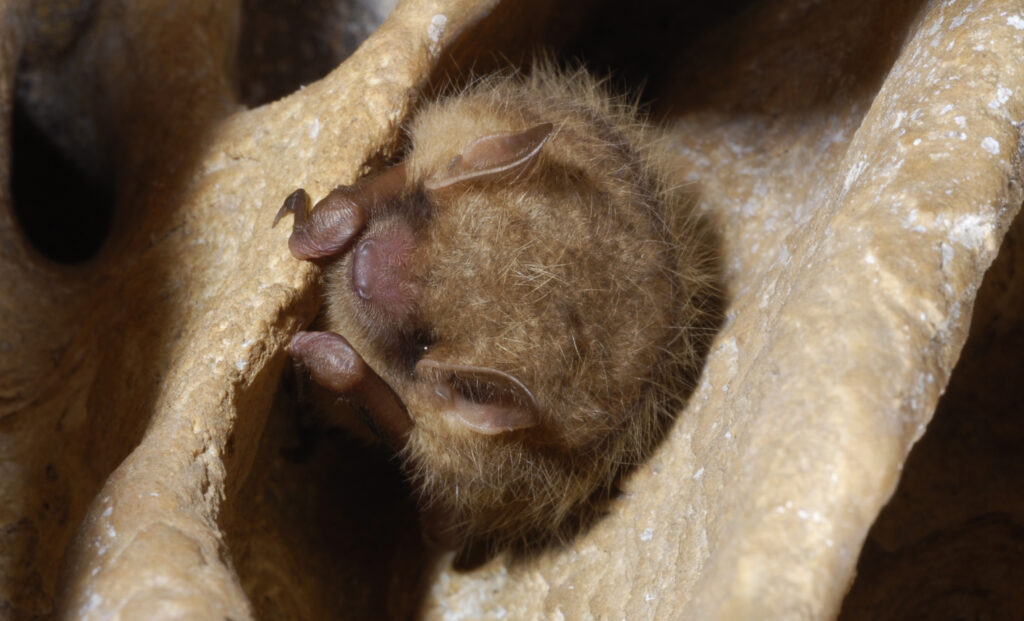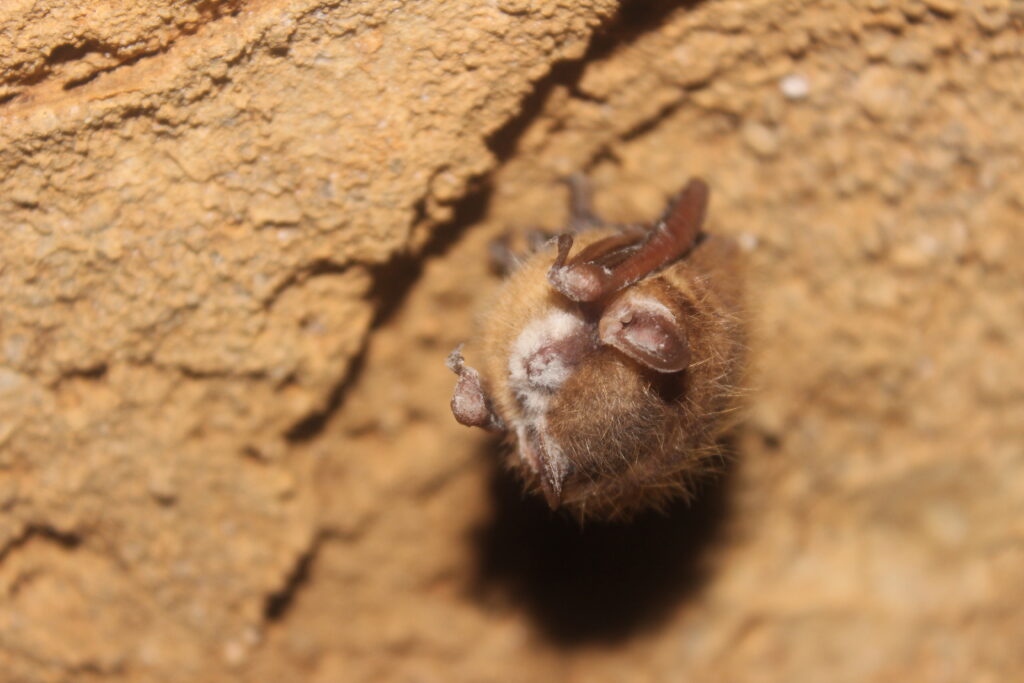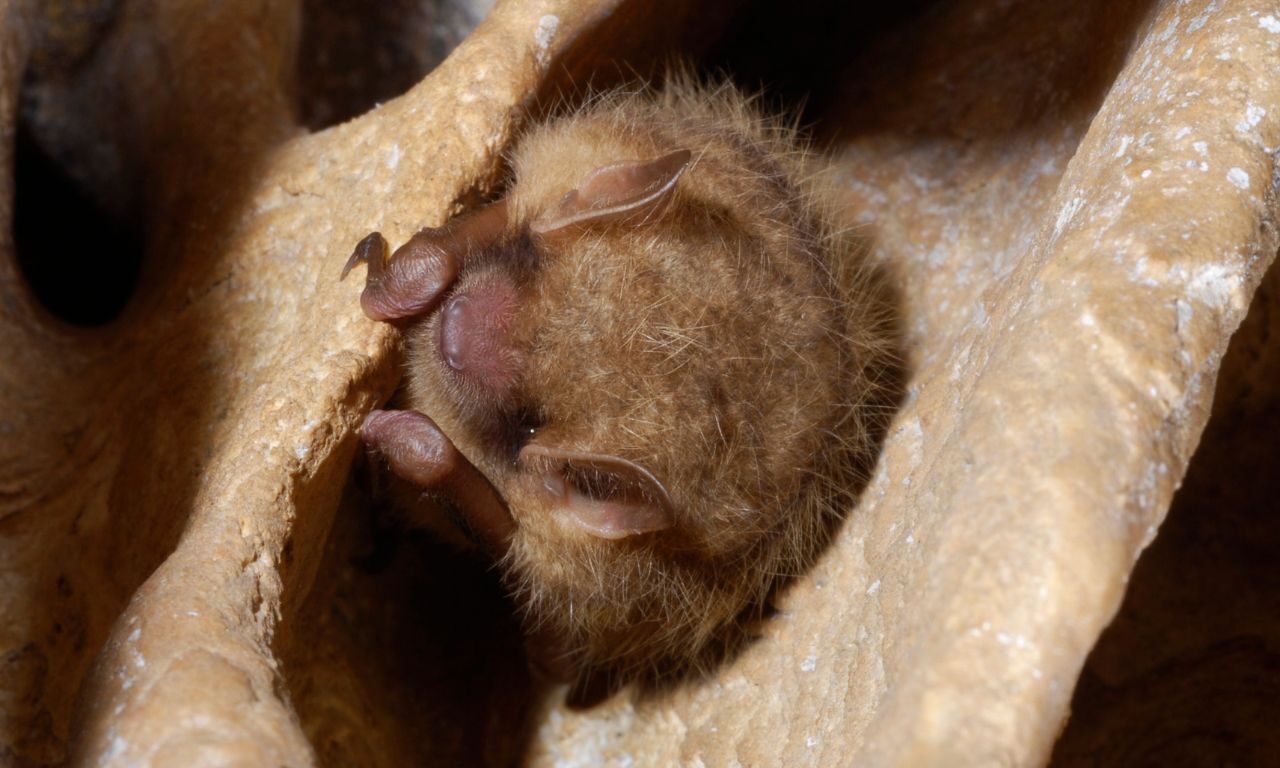We live in a world of bats. Bats are in the order Chiroptera (no, they are not rodents), are very long-lived (up to 40 years), are slow reproducers (only one or two pups per year), are highly social, and are the only mammal species capable of powered flight. They are found flitting across the skies of every continent except Antarctica.
With 1,480 species identified worldwide, these animals have evolved a dazzling diversity of physical characteristics and lifestyles, ranging from large fruit-eaters to acrobatic hunters taking prey on the wing.
Good vision, in conjunction with their powers of echolocation, makes bats astute navigators — helping them find their way through complex environments and catch prey in complete darkness.
Bats play an invaluable role in benefiting human lives. Many bat species are prolific insect predators, foraging nightly and consuming up to 4,000 insects in a single night. Their voracious appetites contribute an estimated value of $3 billion to the country’s agricultural industry through natural, free pest control. In addition, some bat species’ taste for mosquitoes reduces the spread and severity of harmful pathogens to humans, pets, and livestock.

Bats Under Siege: The Deadly Impact of a Foreign Fungus
Sadly, while bats may help us live safer, healthier lives, the same cannot be said in reverse. Bats in North America have been dealing with a variety of human-induced pressures, such as habitat loss, climate change, extermination, and collisions with wind turbines. However, arguably the greatest threat they now face is a non-native fungus (Pseudogymnoascus destructans — Pd for short), which is known by the disease it causes: white-nose syndrome.
Originating in Asia and Europe, Pd was likely transferred to North America by people traveling abroad, hitching a ride on their caving equipment when they came home. White-nose syndrome was first detected in New York in 2006 and has since spread west throughout 39 states and seven Canadian provinces. While harmless to humans, pets, and livestock, the spread of Pd has been devastating.
Thriving in cold, damp locations, the fungus is perfectly adapted to the caves, mines, and abandoned buildings that hibernating bats choose for roosting and resting. As the bats sleep, they become infected by the fungus, with its white, fuzzy spores growing on their wings, chest, and face — causing irritation and damage to their skin and respiratory systems. This stresses the bats and forces them to wake up earlier than normal, depleting their energy reserves and leading to starvation, freezing, and ultimately, death.

Of the 47 species of bats found in the United States and Canada, 12 have experienced a staggering 95-100% population decline because of the fungus. Of those 12 vulnerable species, six reside within Boulder County. White-nose syndrome was first detected in Boulder County in February 2024, and its range continues to expand. There are 20 species of bats in Colorado, and 12 of them are found within Boulder County — necessitating proactive measures. This includes implementing several management practices to “make bat lives easier,” such as identifying and protecting historic structures used by bats, constructing bat-friendly water features known as “bat troughs,” and working closely with our partners at Colorado Parks and Wildlife.
How You Can Help
This is where you can help. By following state and county recommendations, you too can make bat lives easier and slow the spread of white-nose syndrome. Please respect and follow all signage regarding bat habitat and exclusion sites, never disturb bats that are roosting and showing no signs of stress, and thoroughly clean and disinfect any caving equipment between excursions. Report any bat-related concerns to the Colorado Parks and Wildlife bat hotline at 303-291-7771, and email sightings to wildlife.batline@state.co.us. For additional information on bats and white-nose syndrome, visit whitenosesyndrome.org.
Through science, education, and working together, we can do our part to ensure that bats — incredible and vulnerable animals with complex lives — can continue to survive and remain an integral part of Boulder County’s natural heritage.


